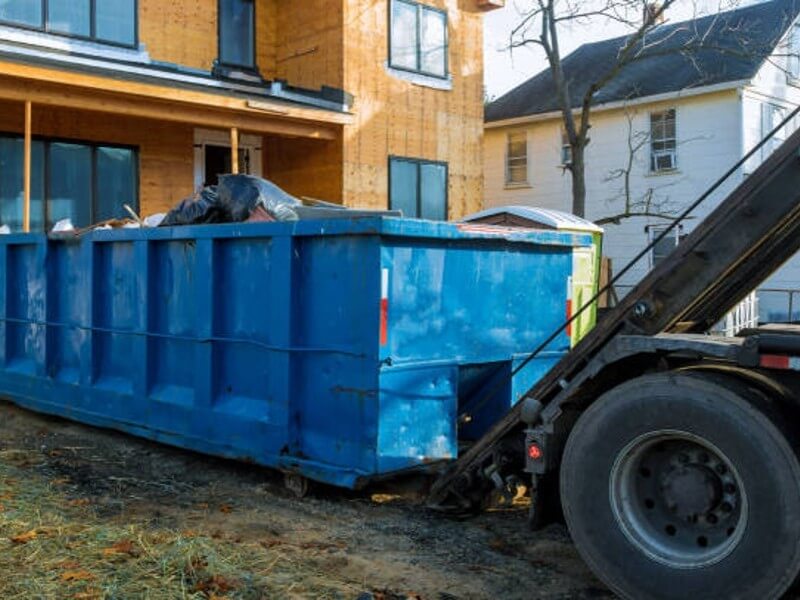Using Data Analytics in the Roll-Off Dumpster Industry
Benefits of Using Data Analytics in the Roll-Off Dumpster Industry
In the evolving world of business, it’s become clear that data is more than just numbers; it’s the key to understanding the heart of operations and customer needs. The roll-off dumpster industry is no exception. Harnessing the power of data analytics can lead to several notable advantages.
Improving Operational Efficiency
- Scheduling: Data can help businesses understand when demand peaks, allowing for smarter scheduling of pick-ups and deliveries.
- Route Optimization: With insights drawn from data, routes can be planned to reduce fuel consumption and improve timely deliveries.
Forecasting Demand and Optimizing Supply
Data provides a lens to predict future trends. By understanding when and where roll-off dumpsters are in the highest demand, businesses can:
- Prepare inventory in advance.
- Adjust pricing during peak times.
- Ensure that staff levels align with demand.
Enhancing Customer Service Experiences
A satisfied customer often leads to repeat business. Using data analytics can assist in:
- Predicting customer needs.
- Addressing concerns before they become issues.
- Tailoring services to individual client preferences.
Minimizing Costs through Predictive Maintenance
No one likes unexpected expenses. But with data in hand, businesses can:
- Predict when equipment may fail or need maintenance.
- Schedule repairs during off-peak times, avoiding disruptions.
- Extend the life of equipment by addressing minor issues before they escalate.
In essence, embracing data analytics in the roll-off dumpster industry is like having a roadmap to success. It offers guidance on where to invest time and resources, highlighting areas of opportunity and growth.

Implementing Data Analytics: Steps and Strategies in the Roll-Off Dumpster Industry
For many in the roll-off dumpster industry, the world of data analytics can seem daunting. But with a structured approach, businesses can seamlessly integrate data-driven insights into their operations. Here’s a straightforward guide to get started.
Step 1: Understand the Business Needs
- Clear Objectives: Before diving into data, it’s vital to outline what you aim to achieve. Whether it’s improving customer satisfaction, optimizing routes, or reducing operational costs, having clear goals will guide the data collection and analysis process.
Step 2: Data Collection
- Sources: Identify where the data will come from. This could be from GPS devices on the trucks, customer feedback forms, or even invoicing systems.
- Tools: Invest in tools or software that can help capture this data effectively. Modern fleet management systems or customer relationship management (CRM) platforms can be invaluable.
Step 3: Data Cleaning and Preparation
- Quality Control: Ensure the data is accurate, consistent, and relevant. Erroneous data can lead to misguided decisions.
- Data Integration: Consolidate data from various sources into a unified platform, ensuring that all the information interacts seamlessly.
Step 4: Analysis
- Choose the Right Metrics: Focus on the key performance indicators (KPIs) that align with your business objectives.
- Hire or Train: Consider hiring a data analyst or training existing staff in basic data analytics techniques. Several online courses are tailored for beginners in the field.
Step 5: Interpretation and Action
- Visualization: Use charts, graphs, and dashboards to visualize the data. This makes it easier to spot trends and derive insights.
- Feedback Loop: Establish a system where insights from the data are regularly reviewed and acted upon. This continuous improvement cycle ensures that the business adapts and evolves based on real-world feedback.
Step 6: Continuous Monitoring and Updating
- Stay Updated: The world of data analytics is always evolving. Keep abreast of the latest tools, techniques, and industry best practices.
- Regular Audits: Periodically review the data analytics process, refining and adjusting as needed to ensure it continues to serve the business’s goals effectively.
Using data analytics in the roll-off dumpster industry does not need to be a complex process. With the right steps and strategies, businesses can harness the power of data to drive growth, efficiency, and customer satisfaction.

Tips and Best Practices for Using Data Analytics in the Roll-Off Dumpster Industry
Embarking on the data analytics journey can be transformative for businesses in the roll-off dumpster industry. To ensure maximum benefits and minimal pitfalls, here are some tried-and-true best practices to consider:
Start Small and Scale Gradually
Pilot Programs: Instead of overhauling the entire operation, start with a small project. This allows for testing the waters and understanding the intricacies before a full-scale roll-out.
Stay Relevant
Focused Data: More data doesn’t always mean better insights. Focus on collecting data that directly relates to your objectives. It not only saves time but ensures clarity in decision-making.
Invest in Training
Upskilling: Data tools are only as good as the people using them. Ensure your team understands the basics of the software you’re using. This might mean periodic training sessions or workshops.
Secure Your Data
Data Protection: Ensuring the safety and privacy of your data is paramount. Implement strong security measures, and keep your software updated to safeguard against potential breaches.
Collaborate and Integrate
Inter-departmental Collaboration: Often, data analytics insights can benefit multiple departments. Encourage sharing of insights and collaborative decision-making.
Integration: Ensure that your data analytics tools can integrate seamlessly with other software in use, like scheduling tools or financial software, to provide a holistic view.
Stay Updated with Industry Benchmarks
Continuous Learning: The roll-off dumpster industry, like all others, evolves. By keeping abreast of industry benchmarks, you can compare your performance and identify areas for improvement.
Feedback is Gold
Client Insights: Beyond just operational data, gather feedback from clients. This qualitative data can offer invaluable insights into areas of improvement, client preferences, and emerging trends.
Review and Refine
Periodic Reviews: Don’t just set and forget. Regularly review your analytics process to see if it’s achieving its objectives. Refine your approach based on real-world results to ensure ongoing relevance and effectiveness.
Embracing data analytics in the roll-off dumpster industry can lead to enhanced operational efficiency, better client relationships, and improved bottom lines. By adhering to these best practices, businesses can navigate the data landscape with confidence and reap the rewards.
Future Trends in Data Analytics for the Roll-Off Dumpster Industry
The technological landscape is ever-evolving, and with it, the role of data analytics in shaping industries continues to expand. For the roll-off dumpster industry, staying ahead means being aware of what’s on the horizon. Here’s a glimpse into the upcoming trends that are set to redefine how data analytics plays its part.
The roll-off dumpster industry might seem quite straightforward to the uninitiated. You have waste, and it needs to be transported and disposed of. But the potential for optimization, especially with the integration of data analytics, is vast. Let’s delve deeper.
Predictive Maintenance
- What It Is: Using data analytics to predict when equipment is likely to fail or require maintenance.
- Benefits for the Industry: This can lead to less downtime, increased equipment lifespan, and reduced costs.
Route Optimization
- Advanced Algorithms: As traffic patterns change and urban areas grow, route optimization can save time and fuel.
- Direct Impact: Efficient routes mean less fuel consumption, timely pickups, and improved customer satisfaction.
Waste Stream Analytics
- Understanding Waste: By analyzing the types of waste being disposed of, companies can offer better recycling and disposal solutions.
- Environmental and Financial Impact: This can lead to reduced disposal costs and a smaller carbon footprint.
Integration with Smart Cities
- Connected Ecosystem: As cities become smarter, there will be opportunities to integrate roll-off dumpster operations with other city services.
- Advantages: This could mean real-time updates about road closures, optimized disposal based on city guidelines, and more.
With these trends in the pipeline:
- It’s crucial for businesses in this industry to stay adaptive and open to change. The early adopters of these data-driven trends will undoubtedly have an edge over competitors.
- Collaboration between tech companies and dumpster services will likely increase, bringing about more specialized solutions tailored for the industry’s unique needs.
- An emphasis on sustainability and green practices will be at the forefront, with data analytics serving as the tool to achieve these goals more efficiently.
In a nutshell, the future looks bright for those willing to harness the power of data analytics in the roll-off dumpster sector. It’s not just about improving operations—it’s about revolutionizing the entire approach to waste management and disposal.

Embracing the Data-Driven Future
The evolution of data analytics in the roll-off dumpster industry signifies more than just technological advancement—it represents a shift in mindset. Recognizing the transformative power of data, business owners and employees alike can anticipate challenges, optimize operations, and uncover opportunities previously hidden in plain sight. As the world becomes increasingly data-driven, those in the roll-off dumpster sector must be proactive, embracing these tools and trends to ensure a sustainable and prosperous future.
FAQs for Using Data in the Roll-Off Dumpster Industry
Why is data analytics crucial for the roll-off dumpster industry?
Data analytics offers actionable insights, helping businesses improve operations, increase efficiency, and identify areas of growth or improvement.
Are there any privacy concerns when using data analytics?
Yes, privacy is a key concern. While data analytics can provide valuable insights, it’s essential to handle personal and sensitive information with care, adhering to data protection regulations.
How often should a roll-off dumpster business analyze its data?
While real-time analytics can offer immediate insights, a monthly or quarterly review is also advisable to recognize patterns, adjust strategies, and set new goals.
Can small businesses also benefit from data analytics?
Absolutely! Even smaller operations can derive meaningful insights from their data, helping them streamline operations, enhance customer service, and stay competitive.


